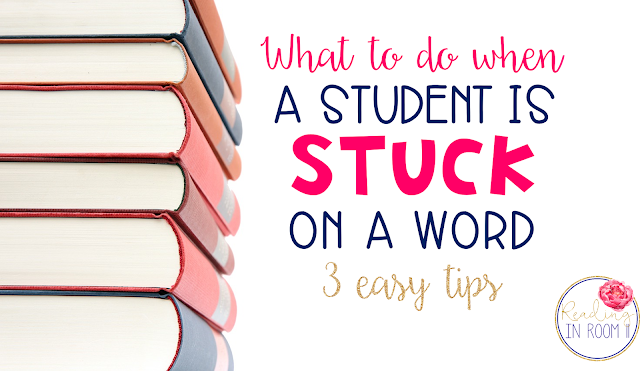I will never forget my first day of student teaching when I was listening to a third grader read and he got stuck on a word. I sat there like a deer in headlights and thankfully my host teacher stepped in. When the students were gone I asked, “What do you do when a student gets stuck on a word?” He was kind enough to rattle off several strategies that I started using the next day.
Fast forward 14 years, and I think that is still a very valid question! Here are the 3 main strategies I use when a student is stuck on a word:
Look at each letter
This seems simple enough, but it is important. This prompt cues students to look through the whole word - beginning, middle, and end - before stretching it out. I’m sure we have all had a reader who looks at the first word and takes a guess based on that!
This can also be a cue if a student misreads a word. For example if a student says dig for dog you can point to the middle letter and say, “Dig has an /i/ in it. What is this letter?”
Stretch it out
This goes hand in hand with look at each letter. As students look at each letter, they say the corresponding sound and then go put the word together!
This can also be a cue if a student misreads a word. For example if a student says dig for dog, you can point to the middle letter and say, “What letter is this? What sound does it make?” or if the student were to say a short vowel for a long vowel you could encourage them to try a different sound.
Does that make sense?
If a student has looked at all of the letters and stretched it out, but still makes a mistake, I usually ask, “does that make sense?” Or I may repeat the word they said and add, “does that make sense?” Next, I refer them back to the word and have them try to figure it out phonetically rather than in the context of the sentence.
Sometimes a student may quickly realized that a word doesn’t make sense and can fix it. Other times they may need more support! This is another time to prompt them back to the first two strategies to try and work through the word again!
Bonus Tip:
I should also add that patience is key. When a student starts to struggle I sometimes count to 5 slowly in my head before making any of these suggestions. It is usually an agonizing 5 seconds!
It is also important to be mindful of who is doing most of the work! It is hard to watch students flounder with a word, but doing the work for them won’t help them learn.
If you are interested in the visuals shown in this blog post - click on the picture below!
If you are interested in additional reading strategy resources - click HERE!
Thank you so much for stopping by!









